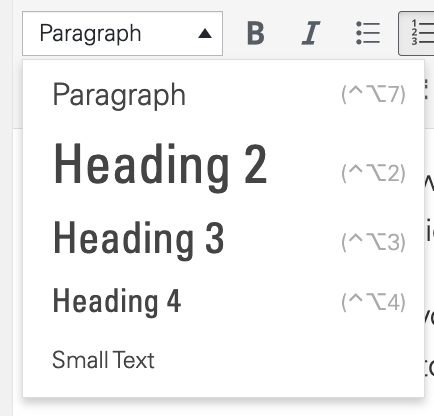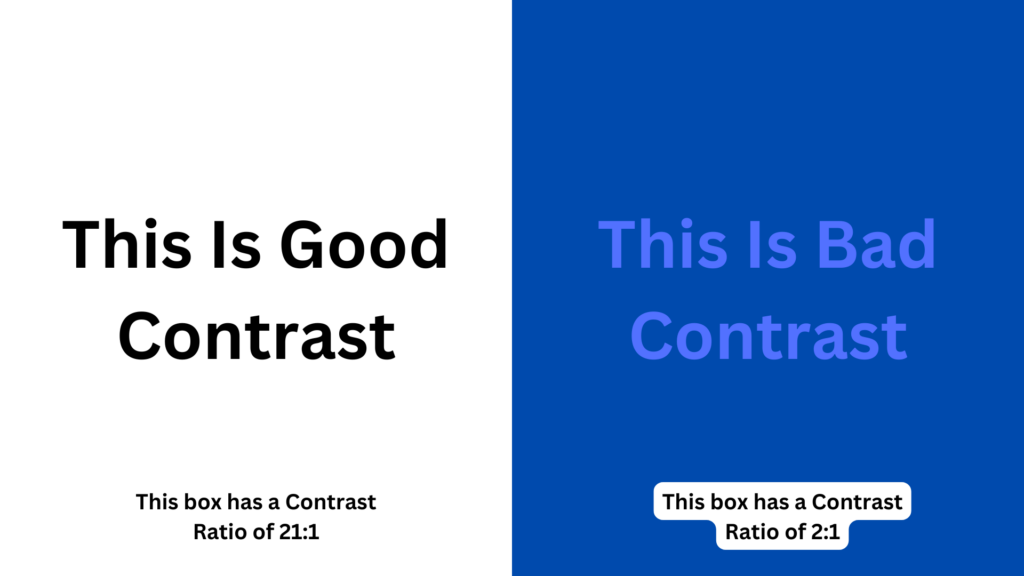Creating Accessible Content
go.ncsu.edu/readext?1020423
en Español / em Português
El inglés es el idioma de control de esta página. En la medida en que haya algún conflicto entre la traducción al inglés y la traducción, el inglés prevalece.
Al hacer clic en el enlace de traducción se activa un servicio de traducción gratuito para convertir la página al español. Al igual que con cualquier traducción por Internet, la conversión no es sensible al contexto y puede que no traduzca el texto en su significado original. NC State Extension no garantiza la exactitud del texto traducido. Por favor, tenga en cuenta que algunas aplicaciones y/o servicios pueden no funcionar como se espera cuando se traducen.
Português
Inglês é o idioma de controle desta página. Na medida que haja algum conflito entre o texto original em Inglês e a tradução, o Inglês prevalece.
Ao clicar no link de tradução, um serviço gratuito de tradução será ativado para converter a página para o Português. Como em qualquer tradução pela internet, a conversão não é sensivel ao contexto e pode não ocorrer a tradução para o significado orginal. O serviço de Extensão da Carolina do Norte (NC State Extension) não garante a exatidão do texto traduzido. Por favor, observe que algumas funções ou serviços podem não funcionar como esperado após a tradução.
English
English is the controlling language of this page. To the extent there is any conflict between the English text and the translation, English controls.
Clicking on the translation link activates a free translation service to convert the page to Spanish. As with any Internet translation, the conversion is not context-sensitive and may not translate the text to its original meaning. NC State Extension does not guarantee the accuracy of the translated text. Please note that some applications and/or services may not function as expected when translated.
Collapse ▲This resource is designed to help you create inclusive and accessible content for your county center’s site, ensuring all community members can access and engage with the information you provide. This guide will cover best practices, tips, and techniques for making your web posts accessible.
Why Accessibility Matters
Creating accessible content ensures that everyone, including people with disabilities, can fully participate in the information and services offered by your county center. Accessibility is not just a legal requirement; it’s also a way to demonstrate inclusivity and respect for all members of the community.
Best Practices for Accessible Content
- Use Descriptive Headings
Ensure your headings are descriptive and accurately reflect the content that follows. Headings should be organized hierarchically (e.g., H2 for section titles, H3 for sub-sections) to help users navigate your content easily.
Dropdown menu for heading assignment in WordPress. Note that there is no option for Heading 1, because that is preassigned to the page title.
- Add Alt Text to Images
Alt text should describe the content and function of images on your site. This is crucial for users who rely on screen readers. Be specific and concise in your descriptions. - Ensure Text Contrast
Text should have a strong contrast with its background to be easily readable. This is especially important for users with visual impairments.
- Use Simple and Clear Language
Write in plain language that is easy to understand. Avoid jargon, and explain any necessary technical terms. This helps make your content accessible to everyone, regardless of their reading level or familiarity with the subject. - Provide Captions for Videos
Videos should include captions to ensure that users who are deaf or hard of hearing can access the information. Captions also benefit users in noisy environments or those who prefer to read content.
By following these guidelines, you can help ensure that your web posts are accessible to a broader audience, making your county center’s information more inclusive and engaging for everyone.


